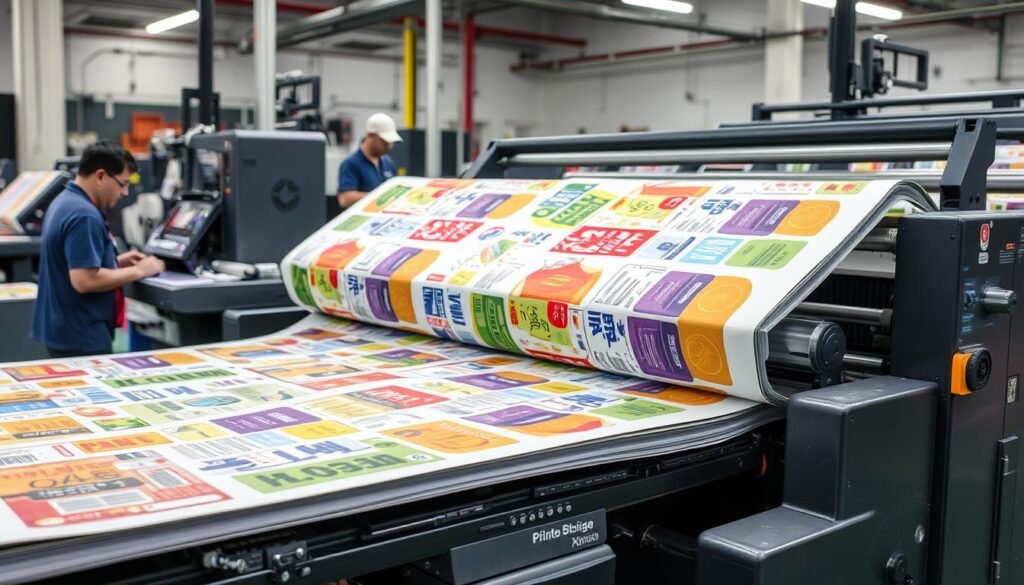In recent years, the focus on water usage in offset printing has grown significantly. As environmental concerns rise, the printing industry seeks to reduce its water footprint. This article explores how water is used in offset printing and its implications for the industry and the environment.

The Basics of Offset Printing
Offset printing is a widely used technique where an inked image is transferred from a plate to a rubber blanket, then onto the printing surface. This method is popular for its high quality and cost efficiency, especially for large print runs.
Why Water is Essential in Offset Printing
Water plays a crucial role in offset printing as it is used to keep non-image areas of the printing plate moistened. This prevents ink from adhering to these areas, ensuring a clean print.
How Water is Used in Offset Printing
The process of water usage in offset printing involves a delicate balance. Water is mixed with isopropyl alcohol or other dampening solutions to create a consistent emulsion that interacts with the ink. This mixture ensures that only the image areas of the plate receive ink.
Water Consumption in the Printing Industry
The printing industry is a significant consumer of water. However, advancements in technology and process optimization are helping reduce water usage. Innovations such as closed-loop water systems and waterless printing are becoming more widespread.
Environmental Impact of Water Usage
Excessive water usage in printing has environmental consequences. It can contribute to water scarcity and pollution. Many printing companies are now adopting sustainable practices to mitigate these effects.
Reducing Water Usage in Printing
There are several strategies to reduce water usage in offset printing. These include using water-efficient technologies, improving maintenance practices, and monitoring water consumption closely.
Innovations in Offset Printing
Technological advancements are paving the way for more efficient water usage in printing. Learn more about offset printing technologies.
Waterless Printing
Waterless printing is an innovative approach that eliminates the need for water in the printing process. This technique uses special plates and inks, reducing both water and chemical consumption.
Closed-loop Water Systems
Closed-loop systems recycle water within the printing process, significantly reducing water usage. This not only conserves water but also cuts costs and improves efficiency.
Economic Benefits of Reducing Water Usage
By optimizing water usage, printing companies can achieve substantial cost savings. Reduced water consumption leads to lower utility bills and less waste management.
Cost Efficiency in Printing
Improving water usage efficiency can enhance the overall cost-effectiveness of printing operations. This is particularly important for large-scale commercial printers.
Case Studies of Successful Water Reduction
Several companies have successfully implemented strategies to reduce water usage in offset printing. By adopting new technologies and processes, they have minimized their environmental impact and improved profitability.
Industry Leaders in Sustainable Printing
Many industry leaders are setting examples by prioritizing sustainability. Their efforts demonstrate the potential for significant water savings in printing.
Future Trends in Printing
The future of offset printing is moving towards greater sustainability. Emerging technologies and a focus on reducing water usage will shape the industry’s evolution.
Emerging Technologies
New technologies are continually being developed to enhance printing efficiency. These innovations promise to further reduce water usage and environmental impact.
Conclusion
The focus on water usage in offset printing is crucial for the industry’s sustainability. By embracing new technologies and processes, the printing industry can reduce its water footprint and contribute to a more sustainable future.

FAQs
What role does water play in offset printing?
Water is used to keep non-image areas of the printing plate moistened, ensuring ink only adheres to image areas.
How can printing companies reduce water usage?
Companies can reduce water usage by adopting water-efficient technologies, improving maintenance, and using closed-loop water systems.
What are the benefits of reducing water usage in printing?
Reducing water usage can lead to cost savings, environmental benefits, and improved efficiency in printing operations.
This article contains affiliate links. We may earn a commission at no extra cost to you.






